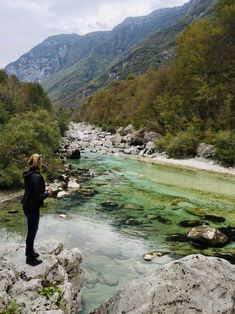What ecosystems accomplish
The UN Biodiversity Conference (CBD COP 15) has emphasized again how important the protection of biodiversity is for humans. One goal of the Kunming-Montreal Global Biodiversity Framework is to maintain and restore the "functions and services of ecosystems". An international research team led by the United States Geological Survey (USGS) Climate Adaptation Science Centers and the Leibniz Institute of Freshwater Ecology and Inland Fisheries (IGB) has highlighted, which ecosystem services most depend on biodiversity in freshwater. A researcher from BOKU was part of the interdisciplinary team that created a worldwide overview - without claiming to be complete.
Animal and plant species in freshwater are particularly endangered: animal populations in rivers, lakes and wetlands, for example, are shrinking twice as fast as those in the sea and on land. And according to the World Conservation Union's (IUCN) Red List of Species, updated in 2022, one-third of freshwater animal species are threatened with extinction: around 59 per cent of turtles, 20 per cent of fish, 37 per cent of mammals and 30 per cent of amphibians.
Species extinction is also linked to dwindling habitats: wetlands worldwide shrank by a third between 1970 and 2015; a decline that is three times as high as the loss of forested areas. Only one third of all major rivers can still flow unimpeded, i.e. without barriers such as dams or other obstacles, into the sea.
Humans depend on biologically diverse waters
Sonja Jähnig, head of department at IGB and professor at Humboldt University in Berlin and a large international team of researchers and representatives from nature conservation have summarized the most important functions that depend on freshwater biodiversity in the journal WIREs Water. Following the framework of the Intergovernmental Science-Policy Platform on Biodiversity and Ecosystem Services (IPBES - analogous to the IPCC for nature), the authors differentiate between material, non-material, and regulating ecosystem services of biodiversity, assigning three important functions or services to each category, and giving scientifically sound examples.
At BOKU, assistant professor Rafaela Schinegger, who holds a tenure-track position for "nature conservation planning and environmental precautions" at ILEN - Institute for Landscape Development, Recreation and Nature Conservation Planning (Department RALI), participated in the study and compiled and discussed functions and services of aquatic ecosystems together with her international colleagues. In this context, Rafaela Schinegger is particularly interested in how aquatic and terrestrial ecosystems and their services are related and which implications this might have for future nature conservation planning. Above all, also how the findings of this study can lead to the implementation of the EU Biodiversity Strategy for 2030.
Below, a summary of the 9 important ecosystem services of freshwaters we cannot do without, according to the study:
1) Food: Although we first think of fish when we think of food from the water, the spectrum is actually large and ranges from animals to plants to microorganisms.
2) Other animal and plant products: Materials from freshwater are used to produce utilitarian and ornamental items, such as clothes made from fish leather, nail files from fish scales and scissors from piranha teeth. Aquatic plants are used as building materials and furniture.
3) Health and genetic resources: Algae, aquatic plants and animal products - from collagens from fish to secretion products from frog skin - are used in medicine and pharmacology.
4) Recreational value: The recreational activities enabled by freshwater biodiversity are considered cultural services. Swimming and boating take place where the water quality is considered good. This is directly related to the living organisms in the water body, which can prevent algal blooms, for example.
5) Importance for culture, religion and spirituality: Almost all cultures around large lakes or rivers have rituals and traditions linked to the living creatures there.
6) Opportunities for education and technological advancement: Formal curricula in primary schools to targeted extracurricular activities for youth - all help to build connections and foster a lifelong commitment to freshwater conservation and responsible stewardship.
7) Climate regulation: Freshwater ecosystems are critical for carbon and methane storage and sequestration.
8) Catchment integrity: Riparian and aquatic plants reduce water velocity, improve bank stability, retain sediments, and filter nutrients and pollutants.
9) Self-purification of water and nutrient cycles: Billions of microorganisms, plants, algae and animals clean the water by filtering excess nutrients, pathogens and pollutants. This is crucial for drinking water production, among other things.
"Freshwaters have been managed primarily as an important resource rather than as THE special and sensitive habitat for an extraordinary variety of organisms that provide all these functions. Policymakers can integrate biodiversity conservation more fully into water management," sums the study's first author Abigail Lynch of the United States Geological Survey (USGS) Climate Adaptation Science Center up.
Link to the publication: https://wires.onlinelibrary.wiley.com/doi/full/10.1002/wat2.1633
This message is based on a press release of the ITUC Berlin about the publication.

